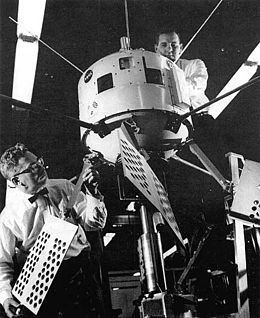Mission type Radio astronomy COSPAR ID 1964-015A Manufacturer Westinghouse Electric Inclination 51.6° Launch mass 68 kg Launch date 27 March 1964 | SATCAT no. 771 Period 1.7 hours Apogee 1.343 million m Last contact November 1964 | |
 | ||
Similar | ||
Ariel 2, also known as UK-C, was a British radio astronomy satellite, which was operated by the Science and Engineering Research Council as part of the Ariel programme. It was built in America by Westinghouse Electric, and had a mass at launch of 68 kilograms (150 lb). It was launched in 1964, and became the first satellite to be used for radio astronomy.
The launch of Ariel 2 was conducted by the United States National Aeronautics and Space Administration, using a Scout X-3 rocket. The launch occurred at 17:25:23 GMT on 27 March 1964, from Launch Area 3 at the Wallops Flight Facility. Ariel 2 was placed into a low Earth orbit, with a perigee of 289 kilometres (180 mi), an apogee of 1,343 kilometres (835 mi), 51.6 degrees of inclination and an orbital period of 101.2 minutes as of 3 May 1964. It ceased operations in November 1964, and subsequently decayed from orbit on 18 November 1967.
